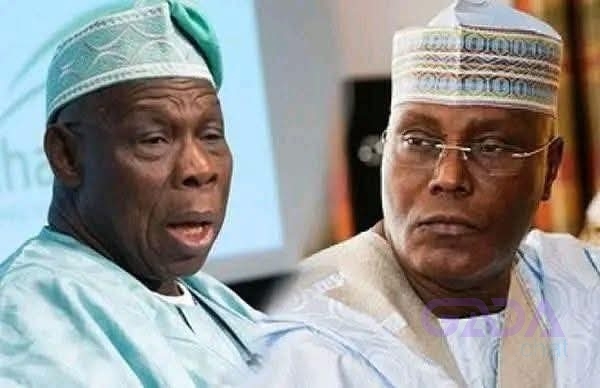In 2017, a conspiracy theory that Nigerian President Muhammadu Buhari had died in a London hospital and was replaced with a body double called ‘Jubril’ from Sudan surfaced in popular discourse. This occurred after Buhari had spent three months undergoing medical treatment in London for an undisclosed illness. The President’s location outside of Nigeria, in the country that was its former colonizer, gave shape to different versions of the conspiracy theory, with suggestions that British Nigerian political elites were behind the replacement of the President and were hiding his alleged death.
Anxieties around the President were initially provoked by a tweet on 19 May 2017, in which Eric Joyce, a British politician, tweeted that the President was dead. President Buhari had last been seen in public two weeks earlier. Eric Joyce’s tweet triggered Nigerians who were looking to escape a repeat of the power vacuum that had been experienced in the country after the death of a previous sitting president, Umaru Yar’Adua, who died in similar and somewhat mysterious circumstances in 2010.
Narratives that the president was a clone emerged in public discourse following President Buhari's public reappearance and return to Nigeria from the UK in August 2017. The first identified online appearance of the clone conspiracy theory was a YouTube video created by Nnamdi Kanu, leader of the Indigenous People of Biafra (IPOB), a secessionist group in southeastern Nigeria, in September 2017. The group had been seizing opportunities during election windows to insert itself into broader political debates by whipping up regional sentiments of marginalization and political apathy. It had used a range of mainstream and social media channels to call the attention of the international community to its agitations and the illegal detention/trial of its leader. The body double conspiracy theory was picked up in the Nigerian media and widely spread through different forms of popular communication in Nigeria, resulting in Buhari publicly acknowledging and confronting the conspiracy theory. On 2 December 2018, Buhari insisted during an event in Poland, ‘It’s [the] real me, I assure you.’ The IPOB leader responded, tweeting:
If Buhari is not dead and replaced by Jubril from Sudan, why won't the Nigerian government sue Eric Joyce, a former British lawmaker, for peddling lies? They can’t because they know I am speaking the truth. @AsoRock @ericjoyce @NGRPresident @UKParliament @NGRSenate @WhiteHouse t.co/qqrKHPmtNy
In this article, this conspiracy theory that President Buhari was a clone is addressed as an opportunity to question the superficial confidence with which conspiracy theories have been dismissed as aberrations and negative externalities of digital ecosystems and their supporters as threats to an ostensibly deliberative public sphere. While not pitched in defense of conspiracy theories, it seeks to examine them without the comfortable protection of post-enlightenment normativity and to remind us how injunctions to ‘speak civilly’ or ‘think rationally’ tend to reproduce tropes from a colonial past, dismissing or erasing other forms of knowledge/reasoning used to make sense of the world to speak to power.
The arguments and analyses we advance here are closely related to those we presented in a previous article (Gagliardone et al.,
Citation
2021), where we empirically illustrated how this explorative, rather than normative, approach allows us to grasp how individuals do not simply fall for, embrace, or support a conspiracy theory but can ‘do’ specific and distinct things with/through them. In that article, we comparatively analyzed how conspiracy theories circulating at the outset of the COVID-19 pandemic were seized by some Nigerian users and politicians as opportunities to criticize the ruling party, while in South Africa the same conspiracy theories became a vehicle to voice deep-rooted resentment towards the West and corporate interests.
Anxieties around the President were initially provoked by a tweet on 19 May 2017, in which Eric Joyce, a British politician, tweeted that the President was dead. President Buhari had last been seen in public two weeks earlier. Eric Joyce’s tweet triggered Nigerians who were looking to escape a repeat of the power vacuum that had been experienced in the country after the death of a previous sitting president, Umaru Yar’Adua, who died in similar and somewhat mysterious circumstances in 2010.
Narratives that the president was a clone emerged in public discourse following President Buhari's public reappearance and return to Nigeria from the UK in August 2017. The first identified online appearance of the clone conspiracy theory was a YouTube video created by Nnamdi Kanu, leader of the Indigenous People of Biafra (IPOB), a secessionist group in southeastern Nigeria, in September 2017. The group had been seizing opportunities during election windows to insert itself into broader political debates by whipping up regional sentiments of marginalization and political apathy. It had used a range of mainstream and social media channels to call the attention of the international community to its agitations and the illegal detention/trial of its leader. The body double conspiracy theory was picked up in the Nigerian media and widely spread through different forms of popular communication in Nigeria, resulting in Buhari publicly acknowledging and confronting the conspiracy theory. On 2 December 2018, Buhari insisted during an event in Poland, ‘It’s [the] real me, I assure you.’ The IPOB leader responded, tweeting:
If Buhari is not dead and replaced by Jubril from Sudan, why won't the Nigerian government sue Eric Joyce, a former British lawmaker, for peddling lies? They can’t because they know I am speaking the truth. @AsoRock @ericjoyce @NGRPresident @UKParliament @NGRSenate @WhiteHouse t.co/qqrKHPmtNy
In this article, this conspiracy theory that President Buhari was a clone is addressed as an opportunity to question the superficial confidence with which conspiracy theories have been dismissed as aberrations and negative externalities of digital ecosystems and their supporters as threats to an ostensibly deliberative public sphere. While not pitched in defense of conspiracy theories, it seeks to examine them without the comfortable protection of post-enlightenment normativity and to remind us how injunctions to ‘speak civilly’ or ‘think rationally’ tend to reproduce tropes from a colonial past, dismissing or erasing other forms of knowledge/reasoning used to make sense of the world to speak to power.
The arguments and analyses we advance here are closely related to those we presented in a previous article (Gagliardone et al.,
Citation
2021), where we empirically illustrated how this explorative, rather than normative, approach allows us to grasp how individuals do not simply fall for, embrace, or support a conspiracy theory but can ‘do’ specific and distinct things with/through them. In that article, we comparatively analyzed how conspiracy theories circulating at the outset of the COVID-19 pandemic were seized by some Nigerian users and politicians as opportunities to criticize the ruling party, while in South Africa the same conspiracy theories became a vehicle to voice deep-rooted resentment towards the West and corporate interests.
In 2017, a conspiracy theory that Nigerian President Muhammadu Buhari had died in a London hospital and was replaced with a body double called ‘Jubril’ from Sudan surfaced in popular discourse. This occurred after Buhari had spent three months undergoing medical treatment in London for an undisclosed illness. The President’s location outside of Nigeria, in the country that was its former colonizer, gave shape to different versions of the conspiracy theory, with suggestions that British Nigerian political elites were behind the replacement of the President and were hiding his alleged death.
Anxieties around the President were initially provoked by a tweet on 19 May 2017, in which Eric Joyce, a British politician, tweeted that the President was dead. President Buhari had last been seen in public two weeks earlier. Eric Joyce’s tweet triggered Nigerians who were looking to escape a repeat of the power vacuum that had been experienced in the country after the death of a previous sitting president, Umaru Yar’Adua, who died in similar and somewhat mysterious circumstances in 2010.
Narratives that the president was a clone emerged in public discourse following President Buhari's public reappearance and return to Nigeria from the UK in August 2017. The first identified online appearance of the clone conspiracy theory was a YouTube video created by Nnamdi Kanu, leader of the Indigenous People of Biafra (IPOB), a secessionist group in southeastern Nigeria, in September 2017. The group had been seizing opportunities during election windows to insert itself into broader political debates by whipping up regional sentiments of marginalization and political apathy. It had used a range of mainstream and social media channels to call the attention of the international community to its agitations and the illegal detention/trial of its leader. The body double conspiracy theory was picked up in the Nigerian media and widely spread through different forms of popular communication in Nigeria, resulting in Buhari publicly acknowledging and confronting the conspiracy theory. On 2 December 2018, Buhari insisted during an event in Poland, ‘It’s [the] real me, I assure you.’ The IPOB leader responded, tweeting:
If Buhari is not dead and replaced by Jubril from Sudan, why won't the Nigerian government sue Eric Joyce, a former British lawmaker, for peddling lies? They can’t because they know I am speaking the truth. @AsoRock @ericjoyce @NGRPresident @UKParliament @NGRSenate @WhiteHouse t.co/qqrKHPmtNy
In this article, this conspiracy theory that President Buhari was a clone is addressed as an opportunity to question the superficial confidence with which conspiracy theories have been dismissed as aberrations and negative externalities of digital ecosystems and their supporters as threats to an ostensibly deliberative public sphere. While not pitched in defense of conspiracy theories, it seeks to examine them without the comfortable protection of post-enlightenment normativity and to remind us how injunctions to ‘speak civilly’ or ‘think rationally’ tend to reproduce tropes from a colonial past, dismissing or erasing other forms of knowledge/reasoning used to make sense of the world to speak to power.
The arguments and analyses we advance here are closely related to those we presented in a previous article (Gagliardone et al.,
Citation
2021), where we empirically illustrated how this explorative, rather than normative, approach allows us to grasp how individuals do not simply fall for, embrace, or support a conspiracy theory but can ‘do’ specific and distinct things with/through them. In that article, we comparatively analyzed how conspiracy theories circulating at the outset of the COVID-19 pandemic were seized by some Nigerian users and politicians as opportunities to criticize the ruling party, while in South Africa the same conspiracy theories became a vehicle to voice deep-rooted resentment towards the West and corporate interests.
0 Commenti
0 condivisioni
19 Views
0 Anteprima







